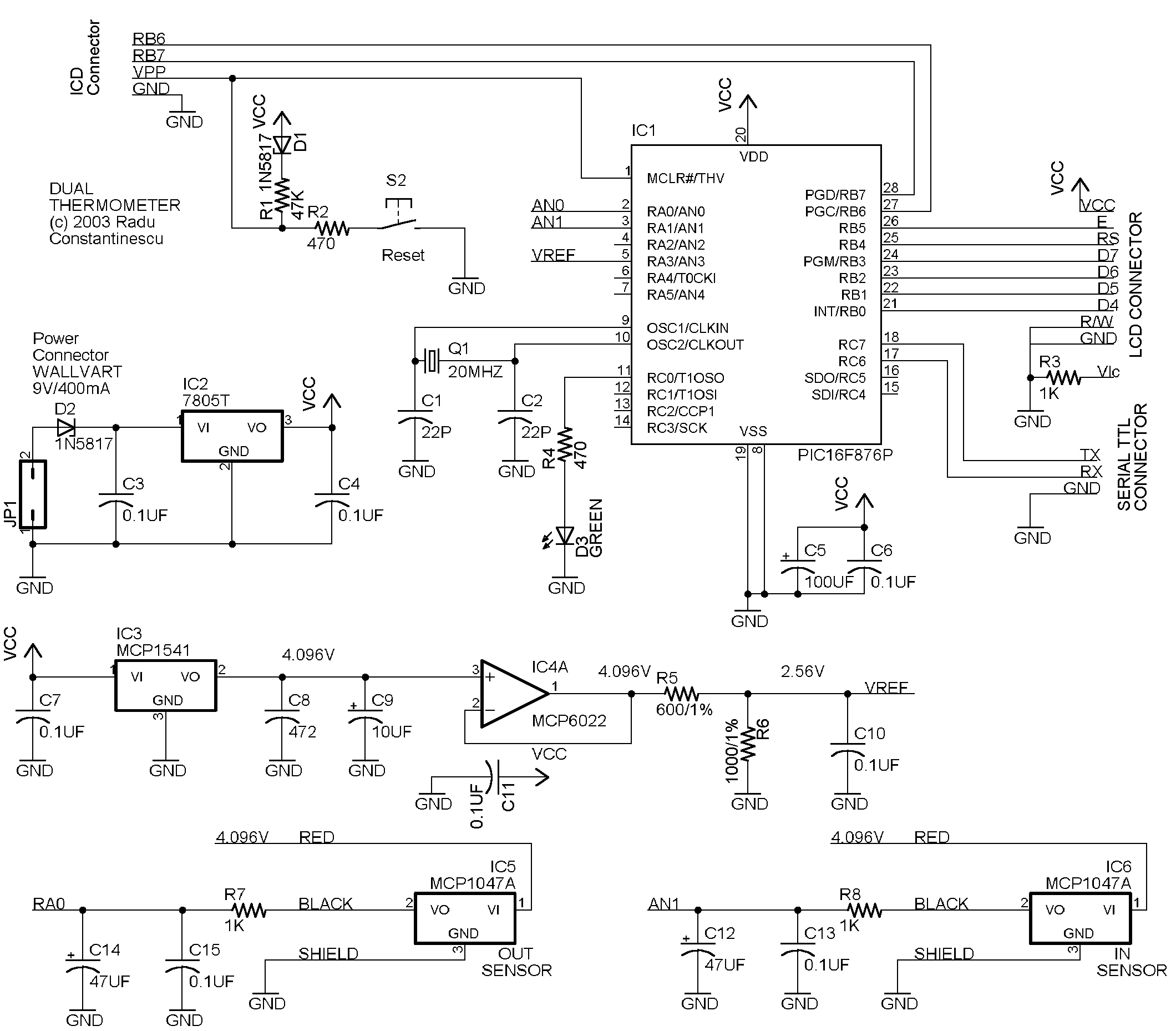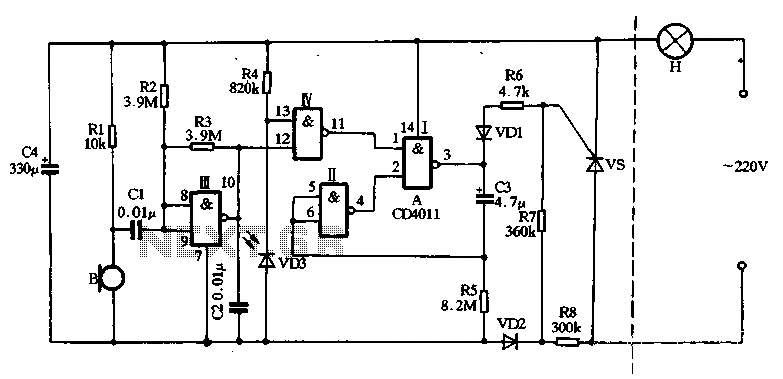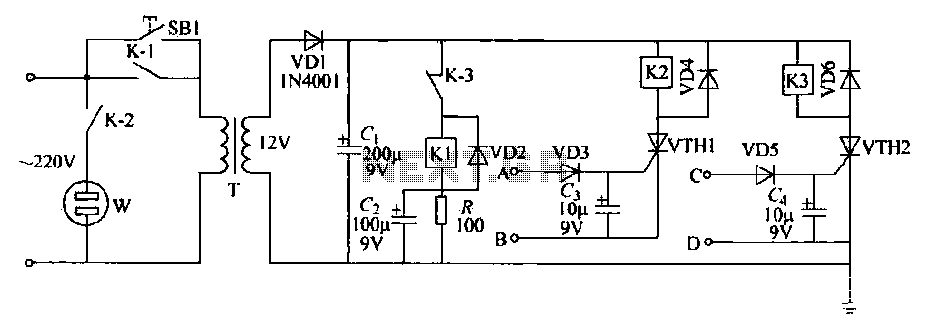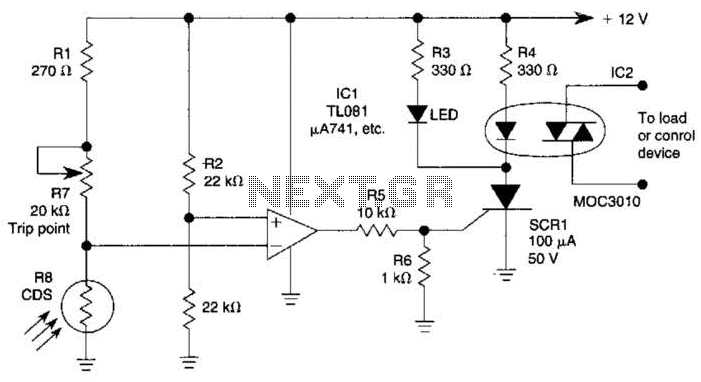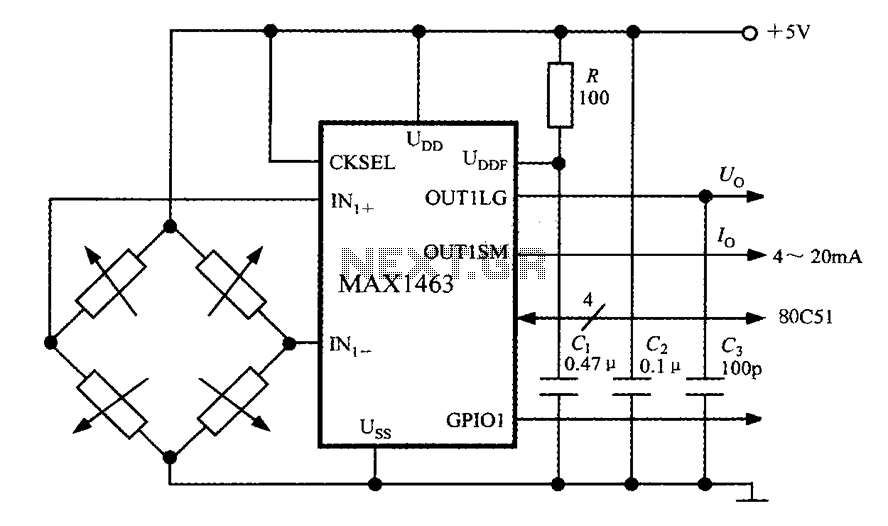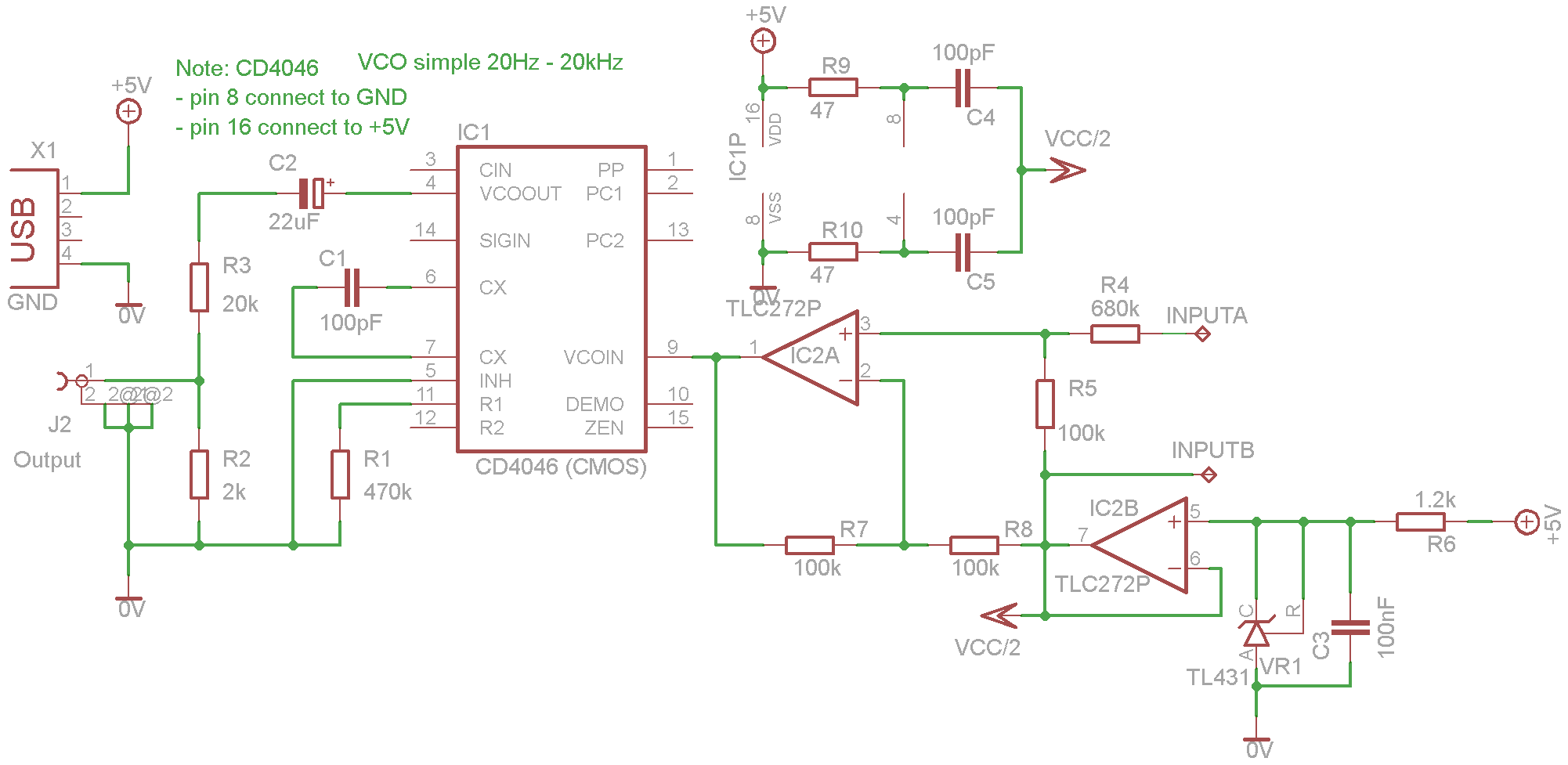
MC74HC4538A Dual Precision Monostable Multivibrator Retriggerable Resettable
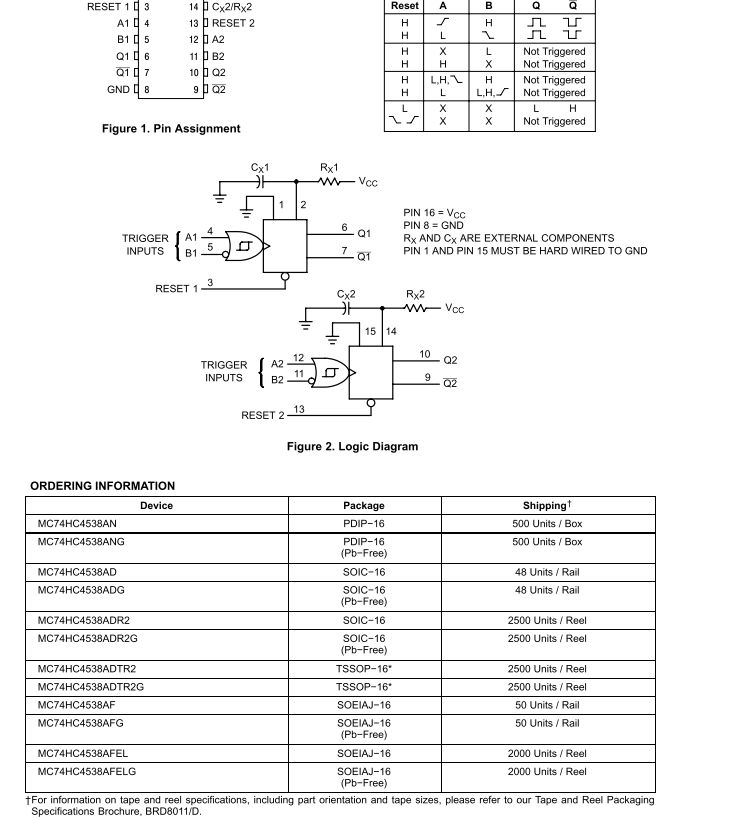
The MC74HC4538A features a pinout identical to that of the MC14538B. Its inputs are compatible with standard CMOS outputs and, when used with pull-up resistors, they are also compatible with LSTTL outputs. This device operates as a dual monostable multivibrator.
The MC74HC4538A is a high-speed CMOS dual monostable multivibrator that can be utilized in various applications requiring precise timing control. Each of the two monostable sections can be triggered by a rising or falling edge of an input signal, which allows for flexibility in design. The output pulse width is determined by external resistors and capacitors connected to the timing pins, enabling a wide range of timing intervals to be achieved.
The device operates on a supply voltage range of 2V to 6V, making it suitable for battery-operated devices as well as standard digital systems. The input logic levels are compatible with both CMOS and TTL, providing versatility in interfacing with different logic families. The use of pull-up resistors allows for seamless integration with LSTTL outputs, expanding its application scope.
In terms of pin configuration, the MC74HC4538A includes dedicated pins for triggering, output, and timing components, facilitating straightforward circuit design. The outputs are capable of driving loads directly, making it efficient in terms of board space and component count.
Additionally, the MC74HC4538A features low power consumption, which is essential for modern electronic designs that prioritize energy efficiency. Its robust design ensures reliable performance in various environmental conditions, contributing to its popularity in both consumer and industrial applications.
Overall, the MC74HC4538A is a versatile and efficient component for generating precise timing signals, suitable for a wide array of electronic applications.The MC74HC4538A is identical in pinout to the MC14538B. The device inputs are compatible with standard CMOS outputs; with pullup Resistors they are compatible with LSTTL outputs. This dual monostable.. 🔗 External reference
The MC74HC4538A is a high-speed CMOS dual monostable multivibrator that can be utilized in various applications requiring precise timing control. Each of the two monostable sections can be triggered by a rising or falling edge of an input signal, which allows for flexibility in design. The output pulse width is determined by external resistors and capacitors connected to the timing pins, enabling a wide range of timing intervals to be achieved.
The device operates on a supply voltage range of 2V to 6V, making it suitable for battery-operated devices as well as standard digital systems. The input logic levels are compatible with both CMOS and TTL, providing versatility in interfacing with different logic families. The use of pull-up resistors allows for seamless integration with LSTTL outputs, expanding its application scope.
In terms of pin configuration, the MC74HC4538A includes dedicated pins for triggering, output, and timing components, facilitating straightforward circuit design. The outputs are capable of driving loads directly, making it efficient in terms of board space and component count.
Additionally, the MC74HC4538A features low power consumption, which is essential for modern electronic designs that prioritize energy efficiency. Its robust design ensures reliable performance in various environmental conditions, contributing to its popularity in both consumer and industrial applications.
Overall, the MC74HC4538A is a versatile and efficient component for generating precise timing signals, suitable for a wide array of electronic applications.The MC74HC4538A is identical in pinout to the MC14538B. The device inputs are compatible with standard CMOS outputs; with pullup Resistors they are compatible with LSTTL outputs. This dual monostable.. 🔗 External reference
